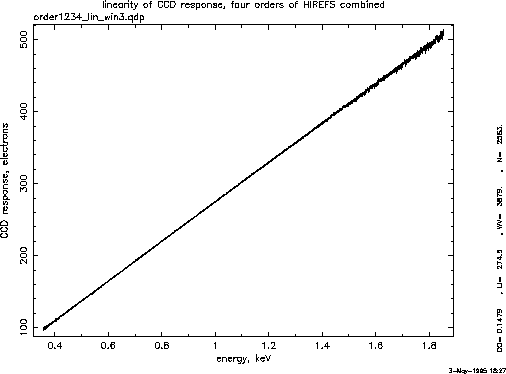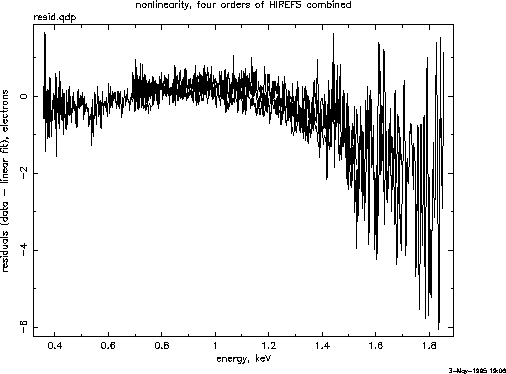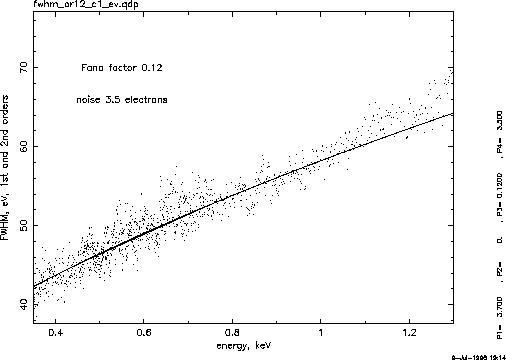
Figure 8: CCD response (peak center) as a function of energy.
An energy scale for the spectrometer illumination pattern has been established using only geometrical parameters of the CCD (and its ability to separate orders). This implies a possibility to measure a linearity of the CCD response to the X-rays. For each row of the CCD a histogram of the signal pulseheights corresponding to the photons of the given order forms a peak, whose shape is close to a gaussian. A gaussian fit was made for these peaks in every row, each order being fitted separately. A centroid of the gaussian is plotted as a function of photon energy on Fig. 8.

Figure 8: CCD response (peak center) as a function of energy.

Figure 9: CCD response (peak center) as a function of energy.
To convert output signal into electrons CCD gain was defined at
0.525 keV (oxigen  line), assuming that electron-hole
production energy is 3.65 eV. Result looks remarkably linear, especially
taking into account that 3 orders are plotted together. Linear
fit to these data produces a function
line), assuming that electron-hole
production energy is 3.65 eV. Result looks remarkably linear, especially
taking into account that 3 orders are plotted together. Linear
fit to these data produces a function  ,
indicating that an offset from zero is less than 0.15 electrons. On Fig. 9 is shown a difference between data points and the linear function
,
indicating that an offset from zero is less than 0.15 electrons. On Fig. 9 is shown a difference between data points and the linear function  .
As it can be seen, for most of the data residuals are within the range
of
.
As it can be seen, for most of the data residuals are within the range
of  electron from zero. At higher energies CCD responce starts to
fall slightly below the linear approximation, although even at 1.8 keV a
declination is
still within 1%. One possible explanation is
that charge collection efficiency declines slightly at higher energies
as the charge cloud size becomes bigger.
electron from zero. At higher energies CCD responce starts to
fall slightly below the linear approximation, although even at 1.8 keV a
declination is
still within 1%. One possible explanation is
that charge collection efficiency declines slightly at higher energies
as the charge cloud size becomes bigger.
Another useful byproduct of making a gaussian fit to the pulseheight distribution in each row of the CCD is a plot of spectral resolution (a gaussian full width at half maximum) as a function of energy shown on Fig. 10. A theoretical prediction for this plot (solid line) is described by a formula:

where  is an energy required for one electron-hole pair
creation (3.65
is an energy required for one electron-hole pair
creation (3.65  ),
),  is the Fano factor, N is rms
readout noise in electrons,
and E--photon energy. The data points
follow the theory resonably well.
is the Fano factor, N is rms
readout noise in electrons,
and E--photon energy. The data points
follow the theory resonably well.

Figure 10: CCD energy resolution (FWHM) as a function of energy.